Andrew Frankel Interview & the McLaren F1 Road Test Backstory
Our interviewee for the Apex has been 211 mph in a McLaren F1 and carried out its one and only proper road test in 1994 for Autocar. He has also been shot at whilst road testing a Ferrari California, previously held the Guinness Book of Records record for the fastest lap of a UK circuit (*though by his own admission, a self-invented record), and has recently got back from being the first journalist to road test the new McLaren Speedtail. Indeed we're delighted to have the renowned journalist and esteemed road tester, Andrew Frankel, to The Apex interview series this week. We hear a bit about how he got into the automotive world, the backstory behind the legendary McLaren F1 road test, some insights on the art of road testing, and also hear a bit about his Instagram only magazine, Drive Nation (@drivenation_).
Charles Clegg interviews Andrew Frankel for The Apex by Private Collectors Club. Recorded and Produced by Jeremy Hindle & Demir Ametov. Transcribed by David Marcus. Edited by Charles Clegg.
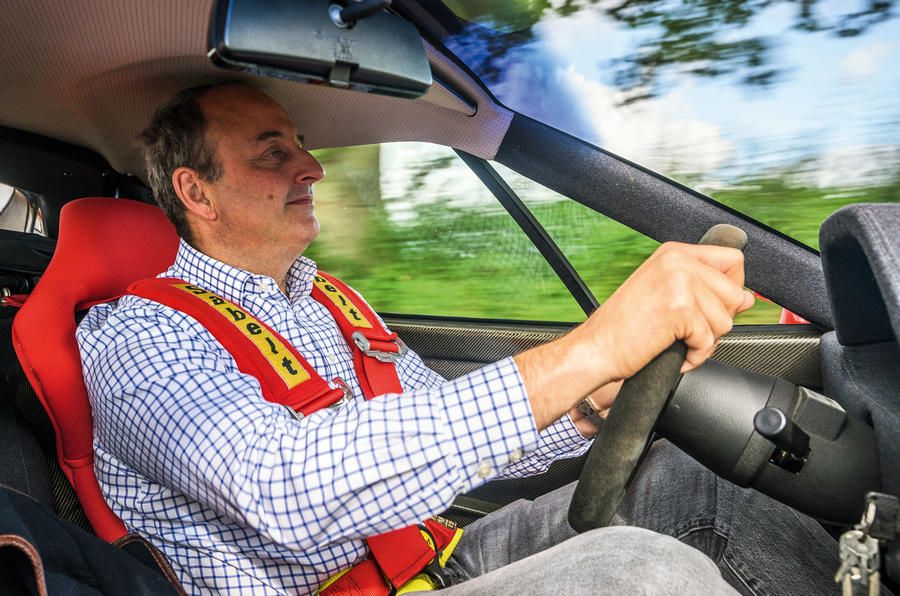
What were your first automotive memories and was there a particular car that started the passion?
I kind of didn't have a choice. I grew up with two older brothers and a father who were completely obsessed with cars, from literally my earliest memory. I don't know where my father got it from because his family weren't interested at all. Like sort of food and drink, they were just part of my life. I don't think it occurred to me that one had any options on these things.
Regarding the car, my father had a 4.5 litre Bentley. He always wanted to own a vintage Bentley, for reasons best known to himself, and in about 1970 when I would have been 4 years old, he bought this 4.5 litre Bentley and I guess it arrived at the same sort of time that I was becoming aware of cars and everything else. That car is still in the family, it's been in the family 50 years now. Yes, if there was one car that got my passion going, it was that one. I've done all sorts of things in that car over the years. I've driven it massive distances, I've raced it at the Le Mans Classic, I've done everything. So yes, that car probably means more to me than any other.

That's a great choice and those pre-war vintage Bentleys are just superb. I've done a couple of rallies myself in a 4.5 litre. Then how did you end up going into automotive journalism?
The honest answer to that question is by being terrible at everything that I tried. I don't think I even thought about being a car journalist because it was like thinking you're going to be an astronaut or a movie star, it wasn't something that I thought that somebody like me would ever get to do. I tried to be something in the City. I think I was probably the only person who managed to lose money in the City at the end of the 1980s. I was a bond dealer and a commodity broker and I got fired from both those jobs fairly quickly. I then tried to become a lawyer and got through about a year of the degree course and dropped out of that.
Yes, it was desperation more than anything else. I was sitting at home, no money, no prospects, no qualifications, no nothing, and a friend of my brothers just alerted him to the fact that Autocar were advertising for a job for a junior road test assistant. And the only reason I even applied for it was because by the time I saw this ad, it had been around for so long I presumed it had already gone. So I rang up to ask if the job was still there, and they said that it was but only because they had so many applicants, they hadn't had time to go through everything.
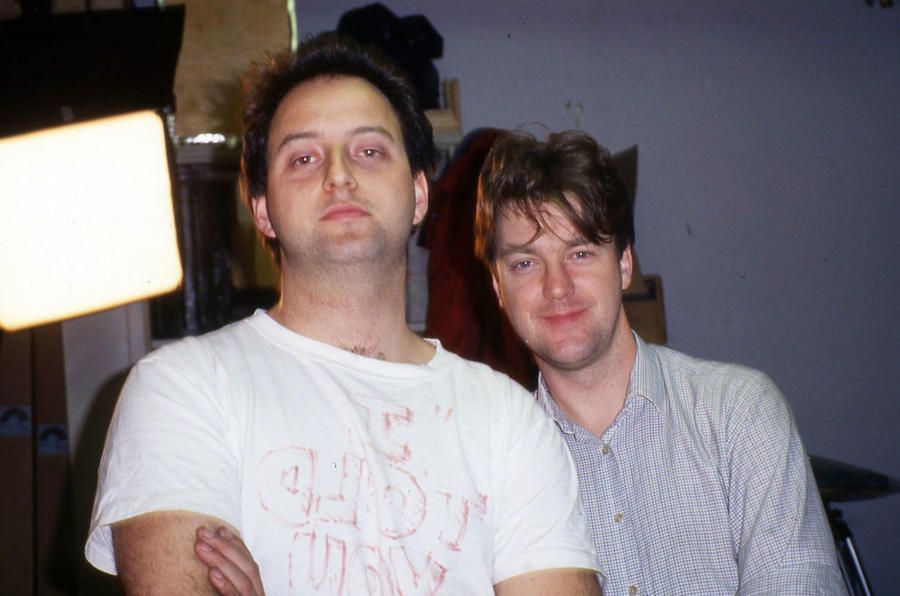
The only smart thing I did was I asked if there was anything I could do to make my CV stand out a bit, and they said that they'd stupidly only asked people to send in their CVs and no examples of their writing and so if I wrote something that might help. So I did. I couldn't even type, so my brother had a secretary who typed up some nonsense I wrote about a Renault 5 that I had, sent it in and I got an interview and yes, took it from there. So very lucky really, I wouldn't recommend it as a way for most people who want to become a motoring journalist to get into the business today. I kind of winged it and fluked it and I lied quite a lot as well, but I got in in the end.
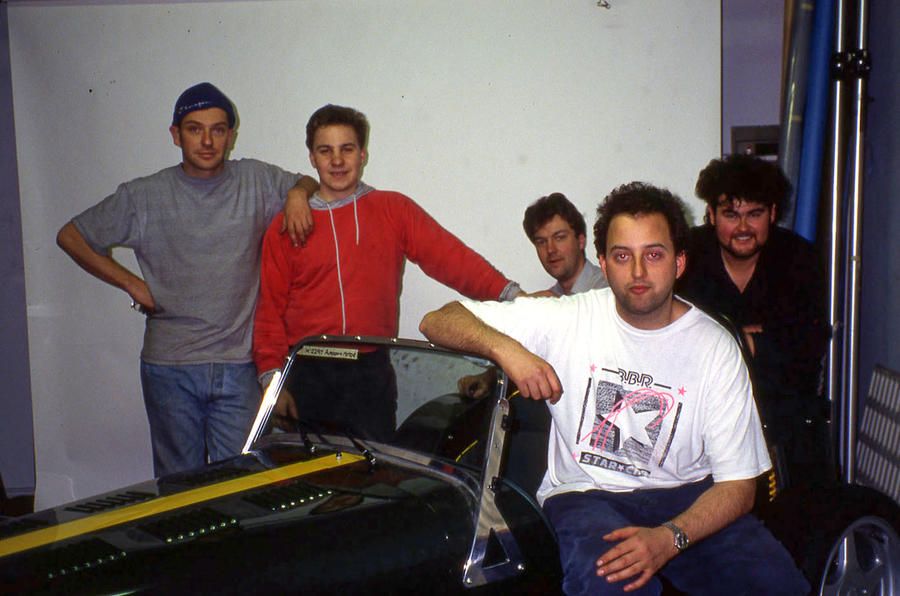
Had you always read motoring magazines from a young age?
Yes. I don't know if you asked this question to lots of people you interview, but for me it was always CAR magazine. CAR magazine in the 1970s, when you had guys like Doug Blain and Mel Nichols and Leonard Setright and George Bishop and then going on to Steve Cropley and Gavin Green. They were the guys who kind of lit the fire, and they were my superheroes.
I can remember once I was sitting in a hamburger bar with my father, I must have been about 11 or 12 years old, in Holland Park, and a red Ferrari drew up outside and this big bearded bloke who I instantly recognised as Steve Cropley, got out of it and came into the hamburger restaurant to pick up his take away or something. I kind of went quiet and wanted to hide under the table because almost, to me, it was like watching Marilyn Monroe walk into a room, which I know sounds slightly strange, but this man was a sort of God to me. My father suggested I go and introduce myself, which was clearly ridiculous, and then for many years, and in fact still now, I get to work with the bloke.
So yes, it was the guys who edited CAR magazine because they were fearless in the 1970s and the 80s, they wrote beautifully, their writing was so good, the magazine looked beautiful and they did all these incredible escapist stories with supercars. I've been reading it ever since.

Funnily enough, one of our previous interviewees, Graham Hunt, said exactly that, that it was a Mel Nichols’ article in a 1977 edition of CAR magazine, where he drove a Lamborghini Countach, Silhouette and Urraco that's really lit his passion for the automotive world, which is interesting. Who were your inspirations out of that bunch of people?
Well, I guess it was Nichols. If you read a very atmospheric, colourful drive story these days, somewhere down the line that writer, even if it's only indirectly, would have been influenced by Mel Nichols because he was the first person that I'm aware of, who started writing those sorts of stories, who went beyond the information, this is the straightforward road test, this is the car, this is what it does, and actually realised that there was a rather bigger, better job that could be done. There was entertainment to be had there as well and actually started crafting stories.
To me these articles were magic. Back when I was away at boarding school, I always knew which day of the week CAR magazine came out and I used to rush down to the newsagents, and if it wasn't there, it kind of ruined my day. And if it was, I couldn't wait until I got back to the boarding house, I would have to sit down on the pavement outside, and at least read something, because I was so desperate to get my teeth into it.
I think today, obviously, the media scene is so utterly different. There's so many more different ways, and in many ways, better ways, in which you can consume it, but I don't think people necessarily do that sort of thing so much, which is perhaps a bit of a shame. I was very lucky to have been brought up on what was world class journalism which just happened to take place in an automotive context.
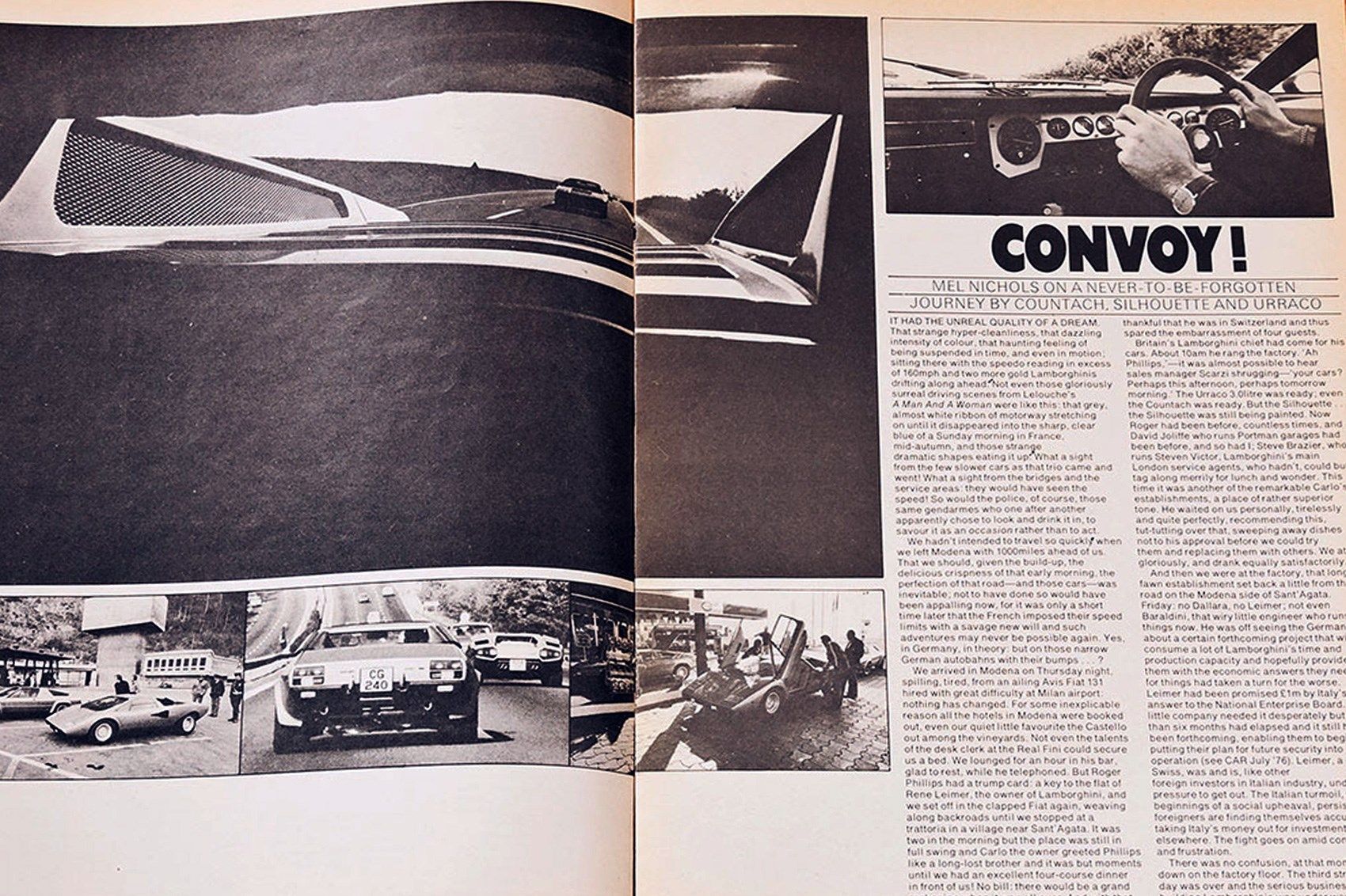
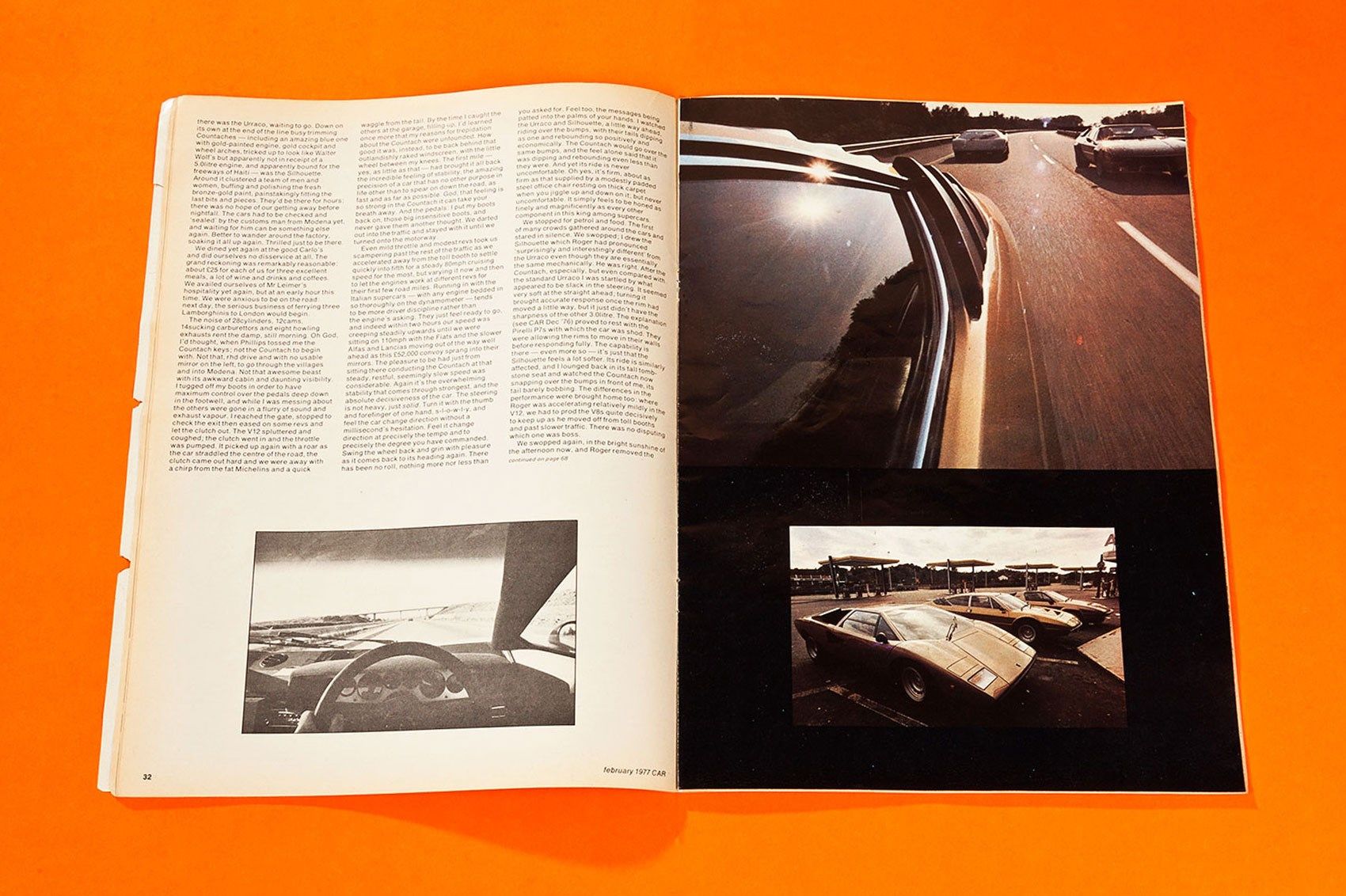

Mel Nichols penned Convoy, one of CAR's most celebrated drive stories, which was published in February 1977. Source: CAR Magazine
These days there seems to be a constant requirement for information to be condensed. You've got Twitter which requires a maximum of 280 characters, I think it is. Instagram is obviously a bit better, I think it's a 2,200 character limit. Then let's not even talk about the Millennial attention span, like myself, which is apparently no longer than a blip of a throttle. Do you think there will always be a place for long form automotive journalism like Mel's or is the world going to all bite size pieces?
No, I think there will always be a place for it. In fact, we're seeing a bit of a resurgence. You will have seen magazines like Magneto and Road Rat. We always thought that once the internet turned up that print would disappear, and that hasn't happened. It will take a different form. There will probably be less of it, but I think that there will always be people who want to consume stories about cars.
One of the things that I feel very blessed to be able to do, is write tiny little bite sized chunks, be it for Drive Nation or on Twitter, and also to be able to write books. I've recently completed books about Bentleys and Aston Martins which have gone on for tens of thousands of words, and between that I think there will be magazines and I think increasingly so. There will be subscription only, they'll probably be quite expensive but they will look beautiful and they will have big long stories in them.
There are so many technologies which have been there and then everybody said that books would die when eReaders came along, and people said that radio would die when television arrived, and it never happens. The market changes but the demand remains and I think it will. That's a very long answer to a short question isn't it, but yes, I think we'll be okay for a while yet.

Regardless of the medium, there's always going to be a requirement for road tests which is, of course, one of the things you're most famous for, and not only for Autocar but you've been the Chief Road Car Reviewer for the Sunday Times for 15 years. Can you tell us a bit about the art of road testing?
The art of road testing, well, write for your reader. I think that's number one. I think there are lots of people who do what I do, who write for themselves. Or, understandably, they write for the person they think is buying the car. I've been lucky enough to have been in a couple of 1,000hp hypercars in the last couple of weeks and I know that 99.9%, if not 100% of the people who are going to read those stories are not going to be in a position to buy one of those things. So writing a sort of buyer's guide to a McLaren Speedtail isn't really serving your reader very well. You want to put him or her in the driver's seat, and that's really the job, and to understand what is important. Obviously in every car there are a different set of priorities, and to be able to understand what is important about them.
You have to be able to do three things in my job. You have to be able to drive, to a reasonable standard. You don't have to be Lewis but you have to be reasonably good. You have to be able to understand the car. Ronnie Peterson, the 1970s F1 driver, he was an amazing bloke and an incredible driver, but he used to drive his engineers insane, because when they say, what's the car doing, he couldn't tell them. He just couldn't understand. Because he was such an instinctive driver, he just knew how to drive the car, but he couldn't set a car up, because he didn't really understand what the car was doing. We have to understand what cars are doing so we can explain to readers what's good and bad about them.
Then obviously the third thing you have to be able to do, which is the most important, is you have to be able to write. You have to be able to communicate because otherwise the first two are meaningless. If people don't read what you write, if they're not interested in what you have to say, then you've fallen at the first fence. So yes, that's pretty much it. If you're a freelancer like me, write the story you've been asked to write, to the length you've been asked to write it and submit it on time. It really is as simple as that.
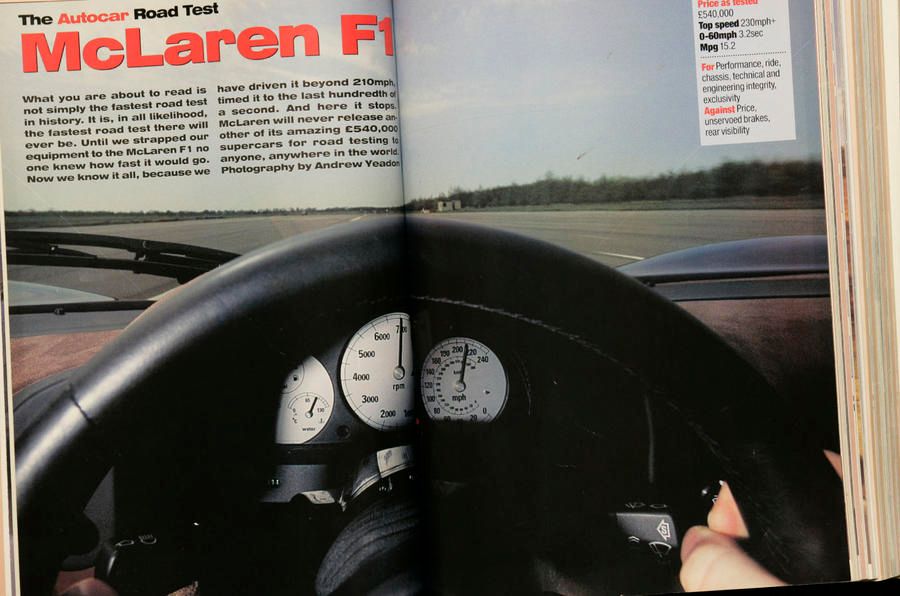


The famous 1994 road test of the McLaren F1 for Autocar. Credit: Autocar
Good advice. Out of all your road tests, I think the one I am most envious of was your 1994 test of the McLaren F1 for Autocar, where I believe you hit a remarkable 211mph. That must have been a pretty special day?
It was a weird day. 2nd May 1994, and I only remember the date because it was the day after Ayrton Senna died. So you can imagine landing that road test was not the matter of a moment. It’s still to this day the only independent, genuinely arrived at set of figures that have ever been recorded for an F1, and as I said, it had taken a long time to set up.
It was all arranged for Bruntingthorpe on 2nd May, and then Ayrton got killed on the Sunday, and you know as well as I do what that man meant to that company. I just kind of thought they weren't going to show, I just kind of thought that the last thing in the world they would want to do is be messing about with the idiots from Autocar. And yet there they all were. Jonathan Palmer was there and Ayrton I know was his absolute hero, and Gordon Murray was there, who designed Ayrton's championship winning cars and everything. I actually remember the professionalism of those people as much as I do the car.
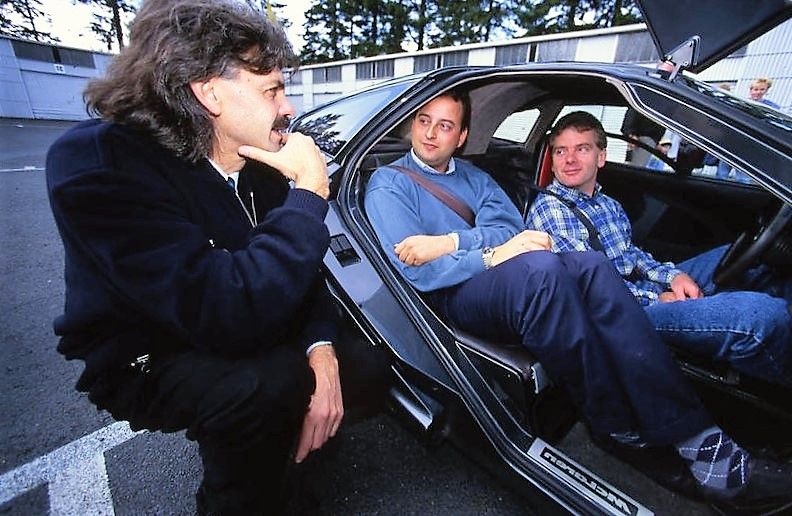
The car itself was just a completely different level to anything. We had driven XJ220s and F40s and that sort of thing by then, but the F1 was a completely different level, and that was fascinating and it was a memorable experience for that, but the context is really everything. And then once we had done all the numbers, and we were done at Bruntingthorpe I drove it up to North Yorkshire. I remember that drive as much for the relief of handing the keys over once I got there, with the car and myself still in one piece, as I do anything that happened on the track.
It was so fast, by what we had experienced, and you do acclimatise and you do get used to it. I drove it again about a year ago, and it still felt like a properly fast car, but it probably isn't as quick as a 720S now, in the way that it gets down the road, but at the time I had never experienced anything like it. It was a surreal experience because I was quite young at the time. I was still in my 20s, and I really worried that I wouldn't be able to help myself and I would just end up doing something really, really stupid because I didn't have the self-control to hold back. I can just remember getting up to, I think we were in Helmsley in North Yorkshire, and just giving the car to somebody else and thinking that goodness, I've got away with it.
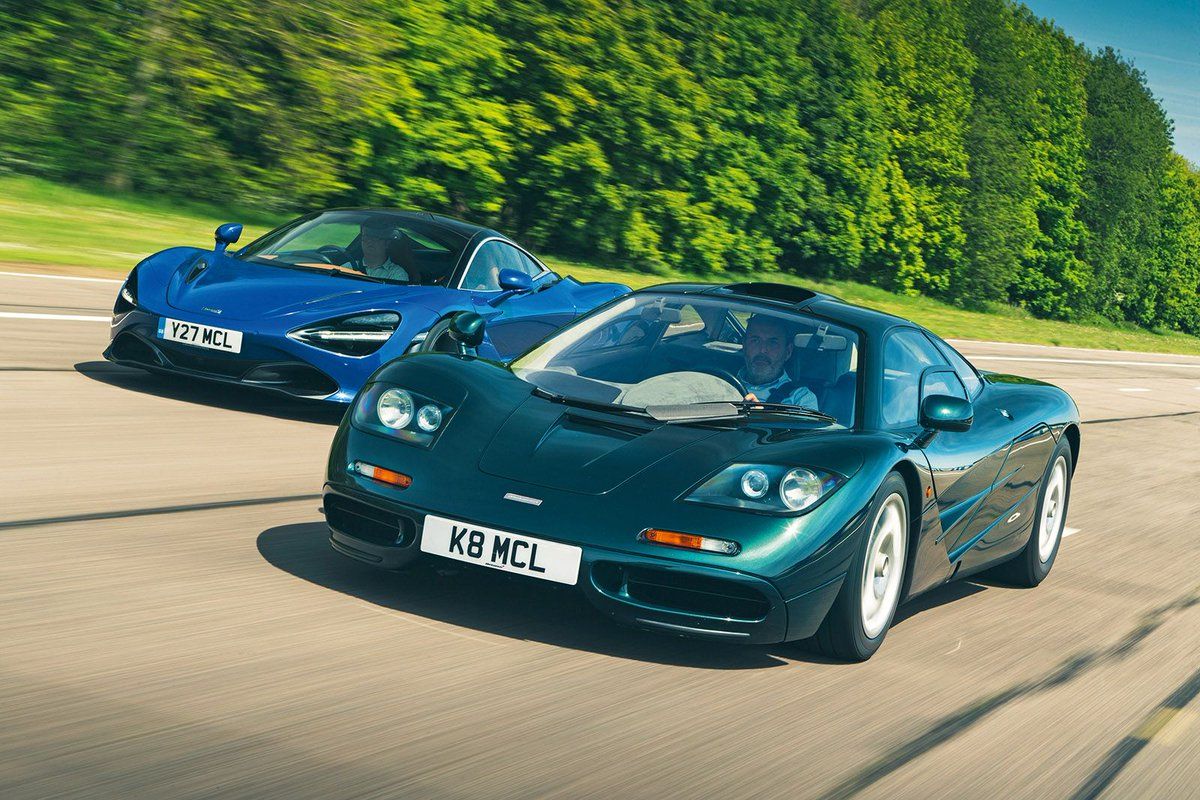
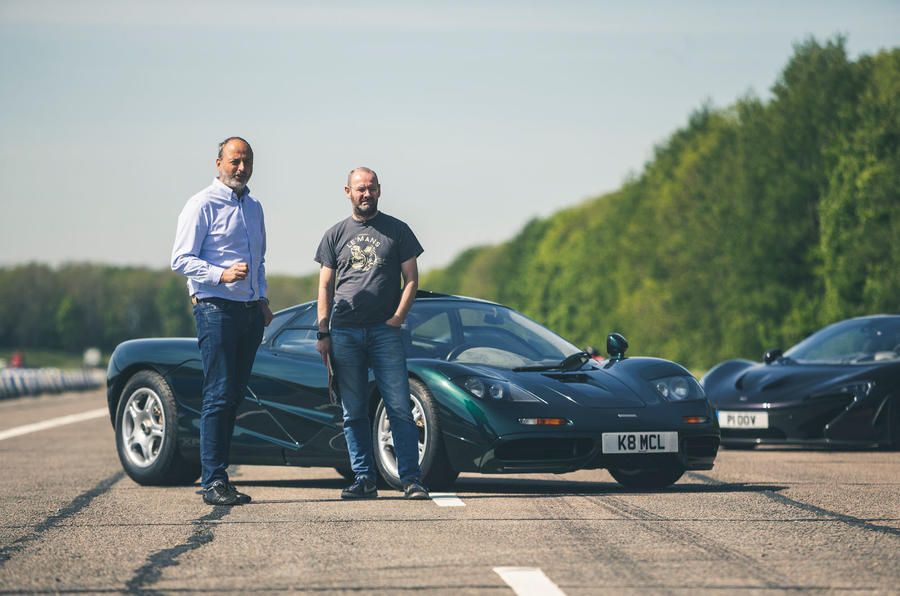
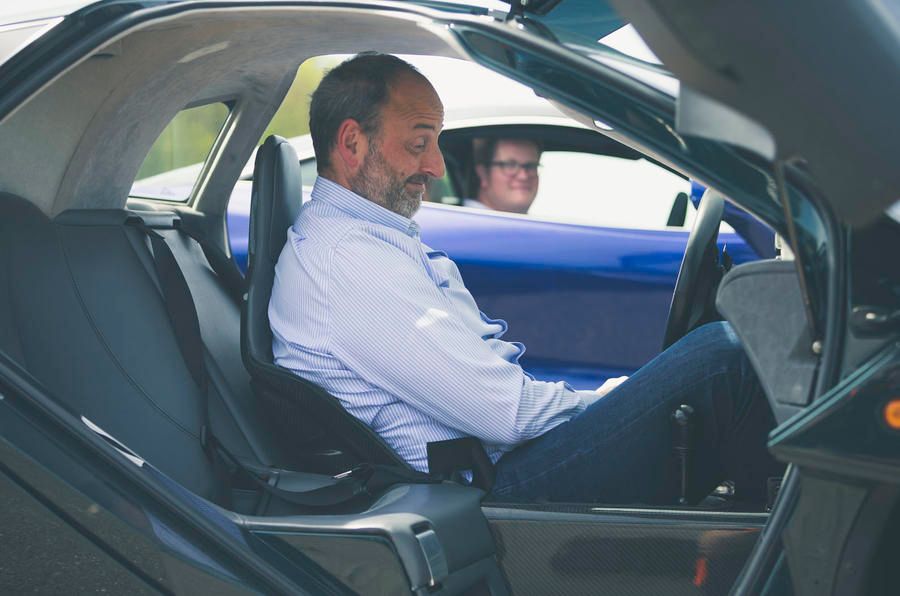
Back behind the wheel of the same McLaren F1 in 2019, 25 years after the first road test. Credit: Autocar
Yes, you don't want to do a Rowan Atkinson in a McLaren F1.
Ideally not. I know Rowan. Rowan is a fantastic driver. I've raced against Rowan, he's a really, really good pedaller. An F1, particularly if it's in any way damp, is not an easy car to drive. There are lots of other drivers who have had many bigger accidents than Rowan had. But yes, absolutely, these days we take all the stability systems and the safety systems so much for granted. It's quite interesting to drive a car with 627hp, which weighs 1,134 kilos, absolutely naked, with nothing to protect you. But you'll know this from racing old cars, historic cars, one of the reasons I love historic cars is it's just you and it and if you cock it up you've only got yourself to blame.
Yes, absolutely. I've seen in the last few weeks, 26 years later, you were the first journalist to drive the McLaren Speedtail on public roads. What was that like and how did it compare to the F1?
You can't really compare the two just because the circumstances were so different. With the F1, I think we were in it for three days, full figures on an airfield, huge amounts of time on the road, on the moors. With the Speedtail last week, that was much more a sort of a grab and go. It became apparent that it was possible, and I literally went and got the car from Woking, and funnily enough with another Speedtail in convoy, so there were two Speedtails together, which was quite strange. They wanted to have a chase car. I just went and drove it around West Sussex, so I haven't driven it on a track, and so I haven't done crazy speeds in it. I certainly haven't strapped any timing gear to one.
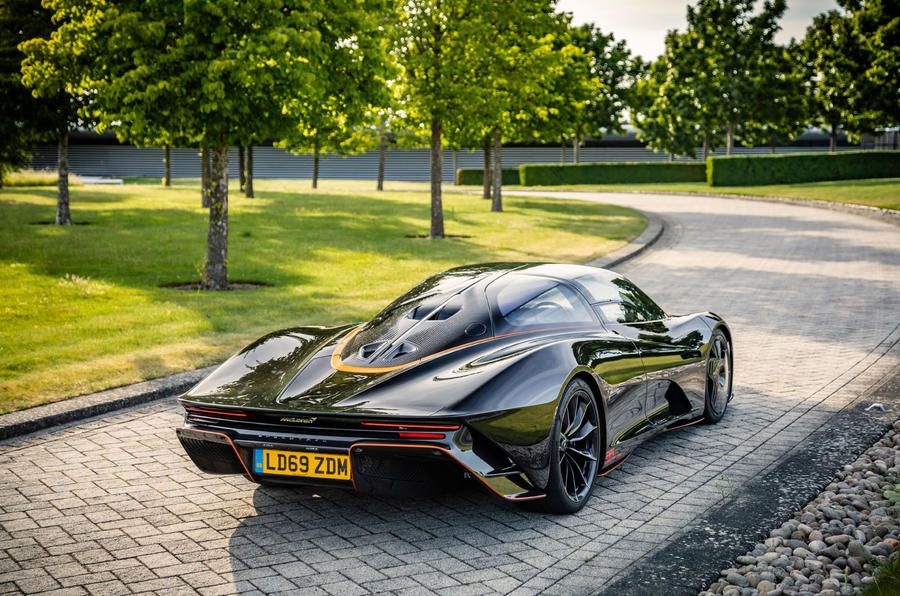
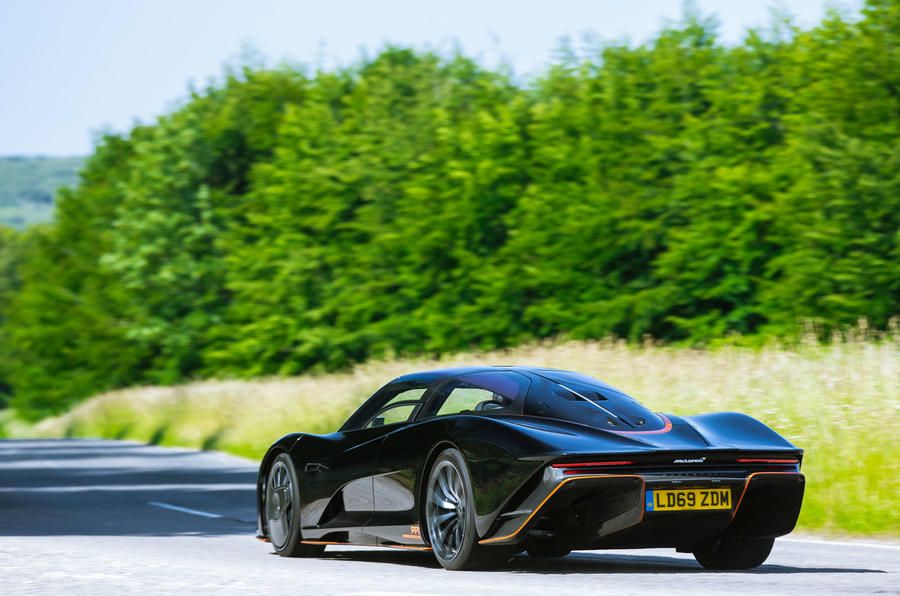
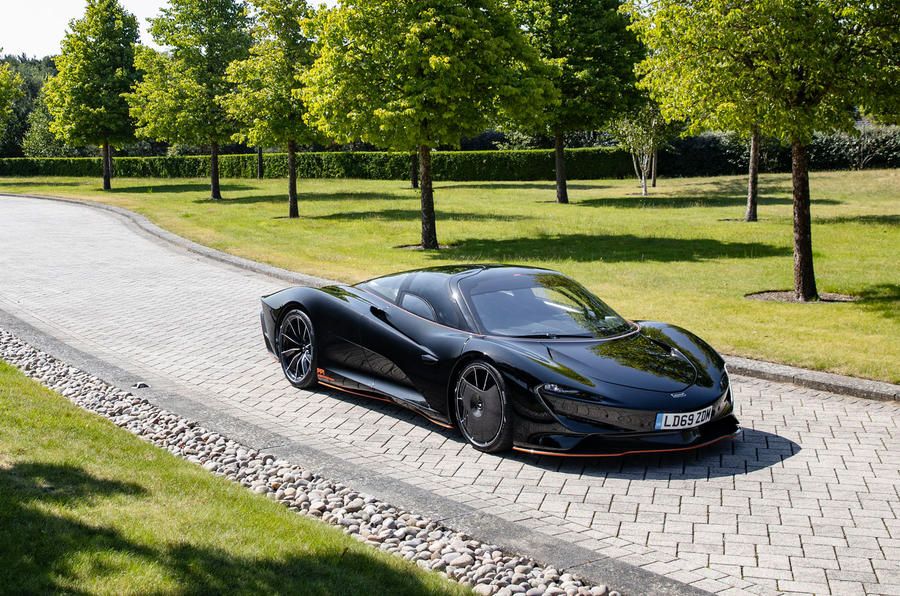
McLaren Speedtail. Credit: Autocar
McLaren will tell you that one is not the replacement for the other, despite the fact that it's got that amazing centre steer driving position and they're only making 106, which is the same number as they made F1s back in the mid 1990s. But it's much more of a luxurious long distance car, rather than a lightweight supercar. The sense of occasion is the same because it's great to be fair. If you do what I do for a living, being first to anything, as we were first to road test the F1, as I was first to drive the Speedtail on the road, you get a real sense of pride out of that. But I regard the Speedtail as unfinished business, because what I haven't done is driven it properly fast somewhere yet, so I'm looking forward to doing that another time.
You talk about your nerves with the F1, returning it in one piece. Has a road test ever gone drastically wrong, and is it true that you once got shot at mid-test?
Yes, I did get shot at. It was in a Ferrari California in Sicily. We have to do sort of lurid oversteer shots every time we go out and drive a car it seems these days. I don't mind doing them on the track, but I don't really enjoy doing them on the public road because there are too many variables. But you kind of have to do it and so I was doing it, and making quite a lot of noise. You drive through the corner and then you turn around and you go back, and photographers being photographers, sometimes you have to do it 20 or 30 times.
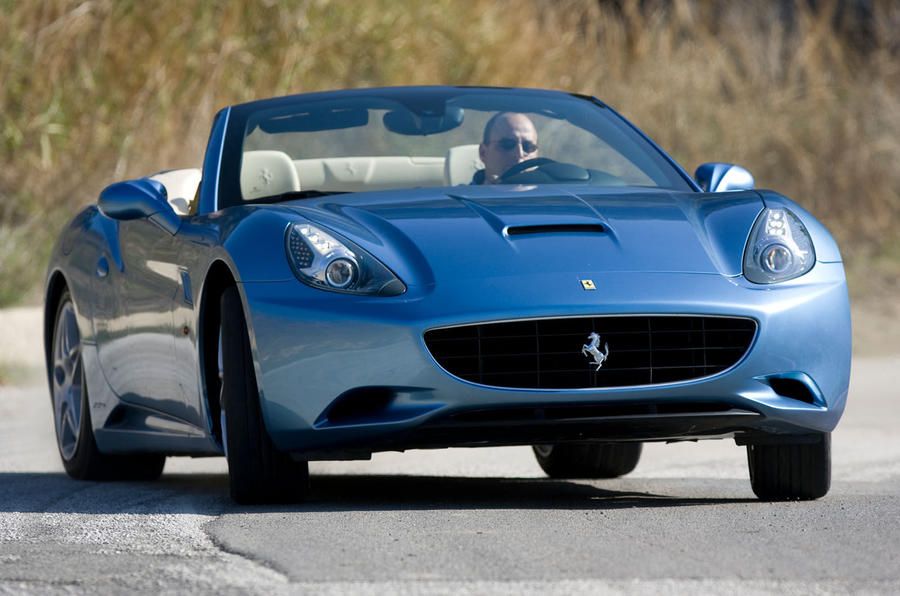
I noticed when I was turning around at one end, there was a bloke standing there with a young boy, not looking terribly happy. The next time I came around he disappeared, so I thought that was okay. But he returned the time after that and he had a shotgun in his hands. I thought that was interesting but I thought he might be out bagging rabbits or something. Then the next time I came back he wasn't there, but as I turned around, a shot rang out above the car. I can remember turning around and trying to get out of there, while at the same time being as close to under the dashboard as I could possibly be, because I was in a convertible car, so I was quite vulnerable. So I got away with that and went back to the photographer and said I think that's probably enough of that for now.
As far as stuff that's actually gone badly wrong, I guess the worst, although we actually kind of got away with it, was the Aston Martin DB7, when would it be in 1994, I guess. So this was a completely last minute thing. Somebody else had got a DB7 and they were going to publish and we heard about it, so we had to rush something into print. So I went and collected a car and I drove it to Wales, did all the photographs and then handed it to a colleague who was to drive it to the Millbrook test track to get all the figures from it, while I went back to the office and started writing the story. Then he was going to phone the figures through.
He went to Millbrook and did the figures and was recording a maximum speed on the car when at 160 something mph the car just went up in flames. He managed to get it stopped, but it didn't have a fire extinguisher on it, there were no fire extinguishers nearby and by the time any kind of fire truck got to it, the car was completely and utterly gone. So yes we totally torched a DB7 prototype. The one thing that I was pleased about was because it's such a fraught business, we always did the top speed run last, so all the other figures were in the bag. So we got the numbers, we probably didn't get the top speed but that was the only thing we didn't get, and the only price we paid was a somewhat flambéed DB7.
Oh dear. Funnily enough our interviewee last week was Ian Callum, so I imagine he wasn't too pleased about having a smouldering wreck returned back after all his work.
I don't think there was much to return, to be honest. I think by the time they put it out there was no car left. [laughs]
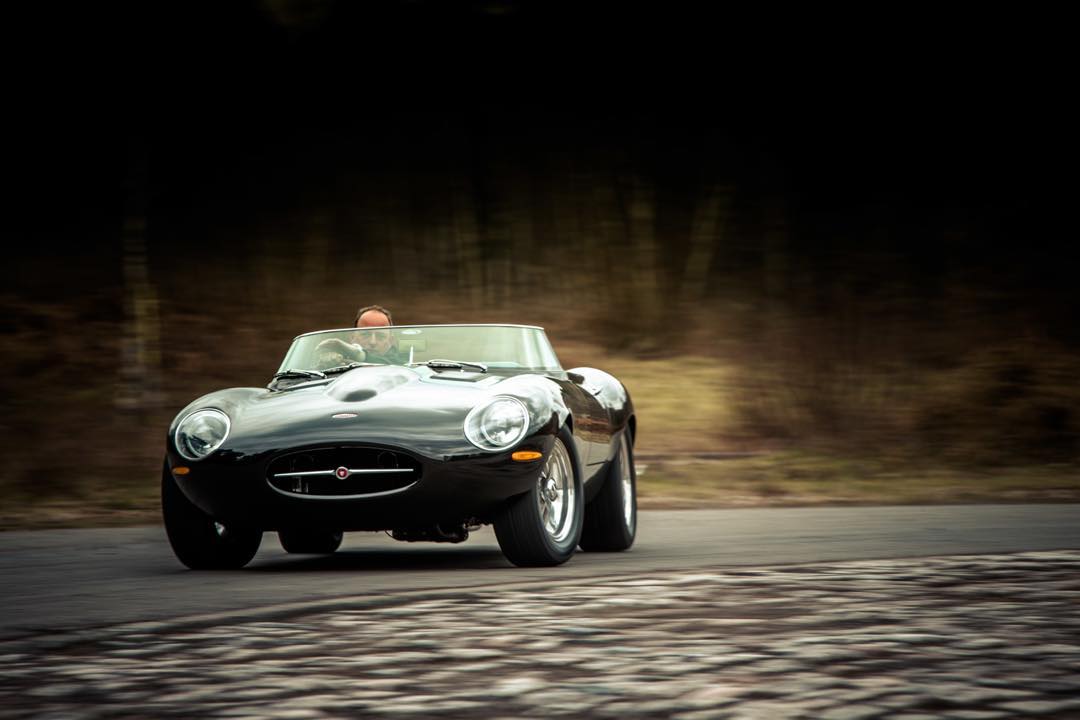
I imagine over the last 30 years or so you've driven some of the world's greatest roads, in probably some of the world's greatest cars as well, and living in the Wye Valley in Wales, I'm sure you have some of those roads right on your doorstep. For someone thinking of dusting off a sports car in the garage after lockdown, where would you direct them to in the UK and if they would go to the Continent, again where on the Continent would you suggest road-wise?
Driving in the UK, because the roads are getting so busy and obviously lots of cyclists, if I want to go and drive a car properly, I just set an alarm. Where I am in the Wye Valley, we have Brecon Beacons pretty close by. It's quiet at the moment because of COVID, but normally you could go up there in the middle of Summer thinking oh wow, wonderful roads, and you can't actually drive a car properly on those roads, because it's caravans, and it's congested, and it's bicycles, and it's all sorts. So I think job one, is wherever you live, set an alarm.
If you've got a car that you want to drive, it should be worth getting up early for. Certainly during the Summer where it's light at 4am, half past 4 in the morning, I quite often will get up and go and do a couple of hours on deserted roads in a great car, and be back before anybody else has woken up. You'll have more fun doing that than you will in days driving around in daylight.

In the UK, the Welsh mountains are fantastic. You can go to Dartmoor but there's a speed limit all over it now which is a bit restrictive. North Yorkshire Moors we used to go testing at all the time because it's very quiet up there and there are some amazing roads. Obviously there's Scotland. West Coast of Scotland is still some of the best places you can go driving, and Snowdonia. So even in our small congested little country there are still great places that you can go driving cars.
In Europe, I would say the most underrated place to drive a car is Northern Spain. It's so quiet there. There are some really really good roads there. You can go to Italy. A lot depends on what time of year you go and that sort of thing, and you definitely can have decent drives in those places. Germany really is quite fraught, just because of the congestion. If there was one place that I would go if I wanted to reliably drive great cars in Europe, it would probably be Northern Spain.


The article in MotorSport following the 1999 Goodwood Revival TT in the editor's father's Austin Healey Sebring Sprite. Credit: MotorSport
Interesting. I know you share my passion for classic cars and historic racing. Indeed you co-drove with my father in the TT at the 1999 Goodwood Revival in his Austin Healey Sebring Sprite. I think sadly the title of your subsequent article in MotorSport of “Sprites and Gremlins” rather summed up that weekend, which was not a huge success. Indeed 21 years later, I can still remember some of your exact wording from that article, including that its handling was “schizophrenic”, with the “certainty of a bullet ricocheting off a building”, which wasn't a glowing review. Though the car did get subsequently improved. Given the imperfections and character of old cars like my father's Sebring Sprite, against the clinical efficiency of a lot of modern cars, in general do you find old cars more exciting to write about?
Oh, 100%. I find old cars more exciting to write about, drive about, be in and about, in all ways. I don't really write about classic road cars any more. I do a few but not many, but I still do get to do quite a lot of track tests of all the racing cars, which is probably my favourite thing to do professionally. I always think of my day job being testing road cars and my hobby, my passion if you like, is old cars and old racing cars.
You will know as well as me that it's all about involvement, and modern road cars just distance you from the sensations of driving, and I don't want that. I want to feel what I'm doing, I want to feel the road, I want to feel on the stage, not in the crowd, and I don't even want to just be a director telling a car what to do, I want to feel part of the action. As you know, absolutely as well as me, that's what old cars bring you. Frankly because they are a bit useless, because they need to be managed, you have to use your skills.
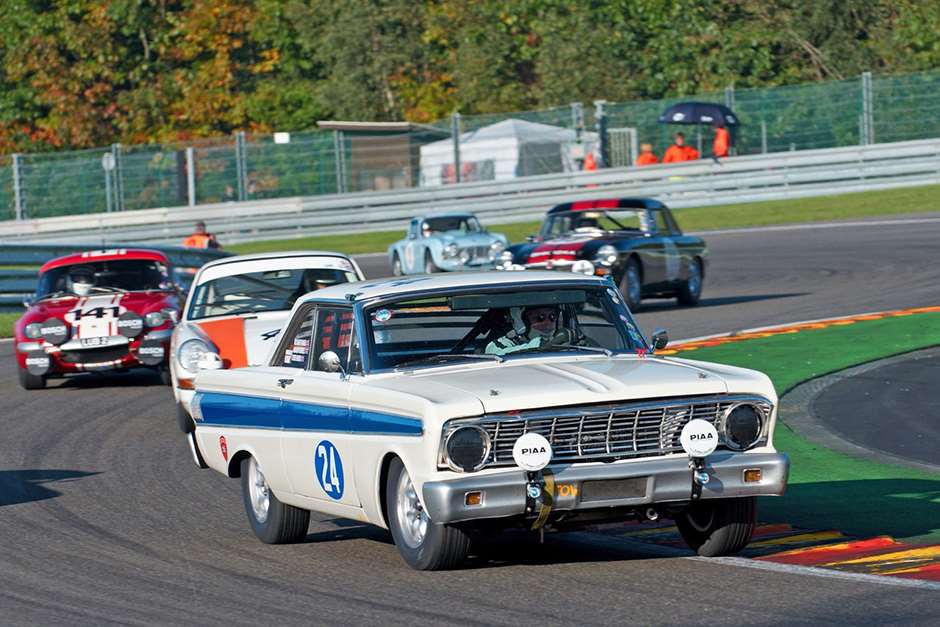


Racing with Chris Harris in a Ford Falcon at the Spa 6 Hours. Credit: GRRC
If you're racing a car on drum brakes you know that if you just use the brakes to the maximum from lap 1, you won't have any by the end of the race. I race a Ford Falcon in the Spa 6 Hours every year. I've done it for goodness knows how many years, more than a decade, and the car, if I'm honest with you, is absolutely useless. It's probably what I love most about it, because it just has to be cared for and managed and looked after because, if you don't, you'll bin it, and even if you don't do that, you won't finish the race. So yes, old over new, every day of the week.
Chris Harris on Cars featuring efforts at Spa 6 Hours. Credit: Chris Harris
Yes, it's always a partnership, not a case of you being just a passenger, which is the key. In 2018, you founded Drive Nation (@drivenation_), an Instagram only car magazine with Dan Prosser, which I've been thoroughly enjoying these last couple of years. What's it all about and what are you trying to achieve with Drive Nation, or have indeed achieved, given it's obviously doing very well?
I've just always had this desire to do different things, which is why I do everything from little tweets to enormous books, and as much as I possibly can in between. Dan realised that nobody was doing car journalism on Instagram. Okay, it's mainly a photographic platform, so I kind of get that, but we suddenly realised that there is an enormous audience out there, and even if we just tapped into a tiny, tiny amount of it, that would probably amount to rather more readers than you might get if you did a car magazine. And so he very kindly asked me if I wanted to fall in with him.
We've now got 36,500 people reading Drive Nation, despite the fact that we've had no money to invest in it, so it's just had to grow organically. We've got a podcast as well, which is quite popular, and we do little other bits here and there. We are starting to attract a bit of investment now, but more than anything else, it's just a fun thing to do.
It's fun for two reasons. One is I just love working with my mates and I really like the format. But secondly, if you do what I do for a living, and you're a freelance motoring journalist, you're kind of at the beck and call of your clients. If Autocar or MotorSport, or anybody else I work for, wants me to go somewhere and do something, then that's what I go and do. With Drive Nation, I can do what I like. I can think to myself, well I'm going to write about this this week, or I'm going to ask Dan what he thinks about writing about that, and it's paddling your own canoe. That's probably the best thing about it, apart from the people on the other side, our audience, who are fantastically interesting, interested, involved, engaged, enthusiast bunch of people and we have a real rapport with them. So it's totally different to anything else I do and I love every minute of it.
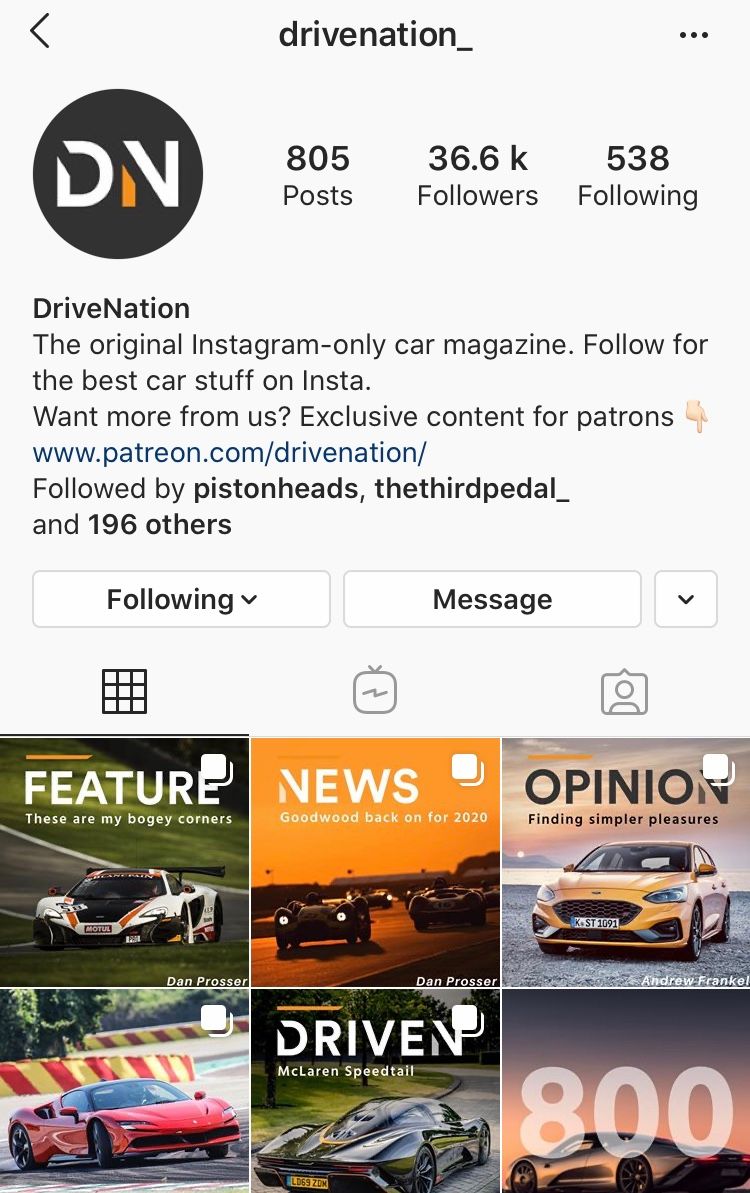
Is it true that you held the Guinness Book of Records record for the fastest lap of a UK circuit and also as a footnote, I believe you even wrote it into the book yourself, is that correct?
Yes, so that was a complete con. It came about because I happened to be sitting in the Autocar office one day when the telephone rang and I picked it up. It was a bloke from the Guinness Book of Records saying we need someone to edit the motoring pages, because whoever was doing it had disappeared. And literally because I had picked up the telephone and I went, “I'll do it”. It was my first ever freelance gig and they paid me 50 quid for it.
I had always wanted to do 200 mph, which I managed to do slightly later on, and I'd always wanted to get in the Guinness Book of Records. All the records looked absolutely impossible. But when I suddenly found myself editing it, I suddenly thought, I can invent a record. The problem was I didn't want to set a record, I wanted to break somebody else's record. So what I did was I invented this record called the fastest lap of a UK circuit by a production car. I then got my boss Howard Lees to go up to Millbrook in a Ferrari Testarossa and I think he drove around at about 170 mph or so. So that was fine, that was a record which went into the book. Then Ferrari replaced the Testarossa with a 512 TR which was a faster and more stable car, so I just went up there and did 175 mph and bang, I was in the book.
But yes, I broke a record which I created simply so that I could break it. Which I mean is a bit of a con, but hey hey. I got in again recently and rather more prosaically for driving a car through 14 countries on one tank of fuel, which was a profoundly tedious thing to do, but it got me back in the book, so yes.
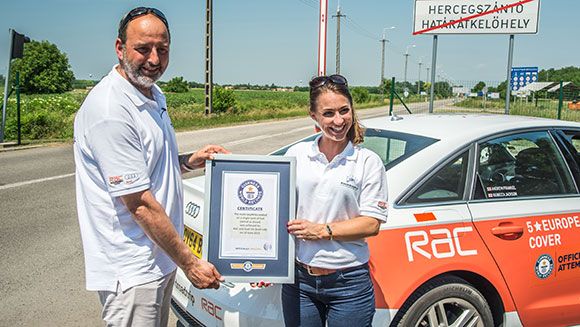
Then onto our quick fire questions - who is your automotive hero?
Stirling Moss.
Good choice. He's one of my heroes as well.
Because he's the only person like that who became a very close friend of mine. I think actually not for how fast he was but for the way he went racing. The fact that he gave up the 1958 World Championship to Mike Hawthorn just out of honour. I can't admire someone who is not as engaging out of the car as he is in it, and I think that Stirling was the complete racing driver. I miss him very much.
Yes, I couldn't agree more. I've been lucky to race against him once. In fact it was his last race at Le Mans Classic, when he got out of his Porsche and he said “that was the first time in my whole career I've ever felt unsafe in a car” and he retired at that exact point. What an amazing man. Also I have to forgive him slightly in that he did ask my mother on a date back in the day, I think whilst my mother was going out with my father. I'm not sure my father was particularly happy about it but I don't think they ever went on a date. But there you go, I'll forgive him for that. But what an amazing man, obviously hugely missed.
Next question - historic cars or modern cars? I think I know your answer to that, but just in case.
Yes, historic.
Best car ever driven?
Road car or racing car, or doesn't it matter?
One of each.
Racing car, Porsche 917. Road car, Ferrari F40. I find myself in the somewhat unusual and fortunate position to have driven two 917s. I've driven a standard sports car and I've driven the Can-Am car, the 1,100 hp Mark Donohue thing. Just everything about the 917, just how powerful it was, how successful it was, how dangerous it was, it just presses every button I've got. And the F40, I just haven't driven a more exciting road car than that. Any chance I get to get in an F40. I'll go anywhere, do anything in it, because they're just magical things.
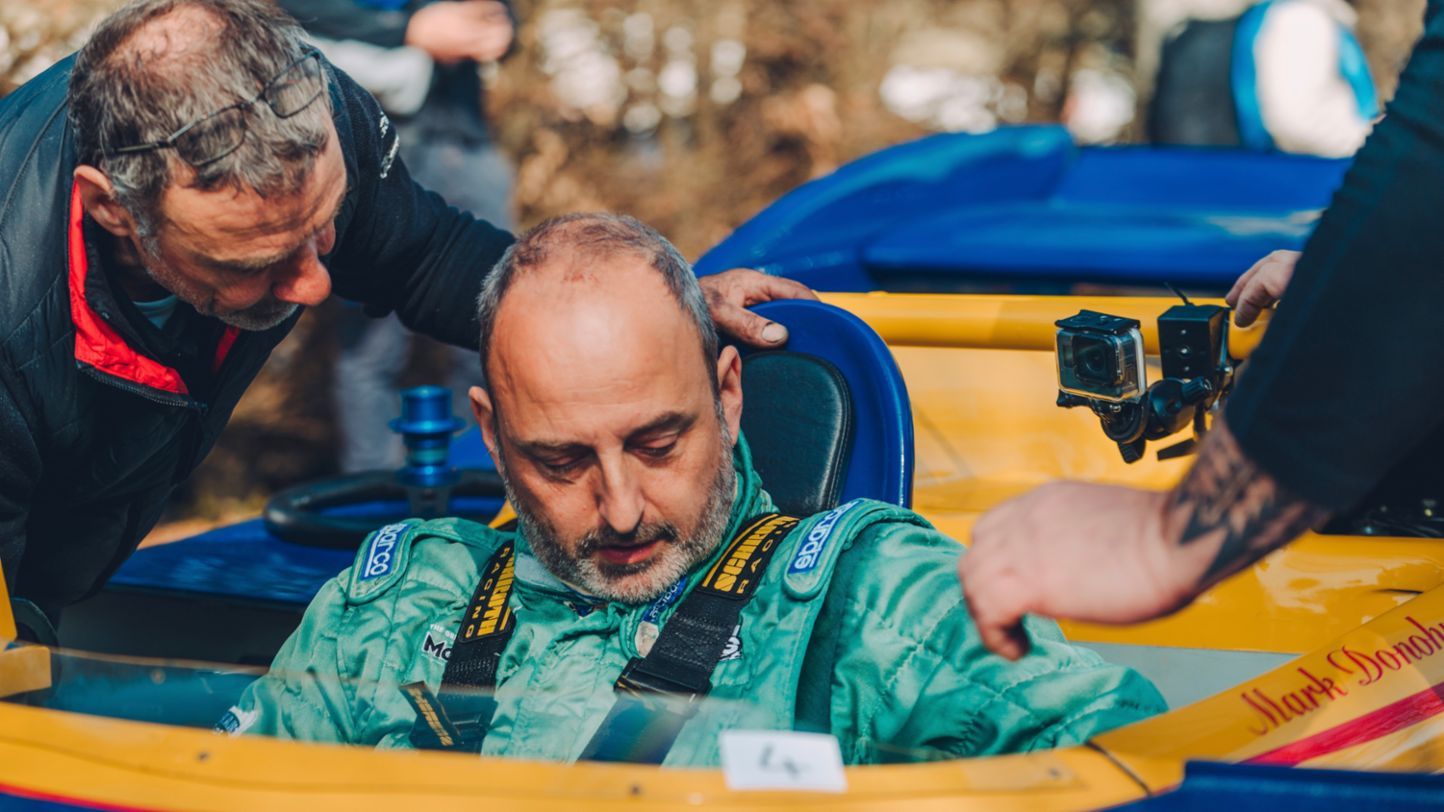
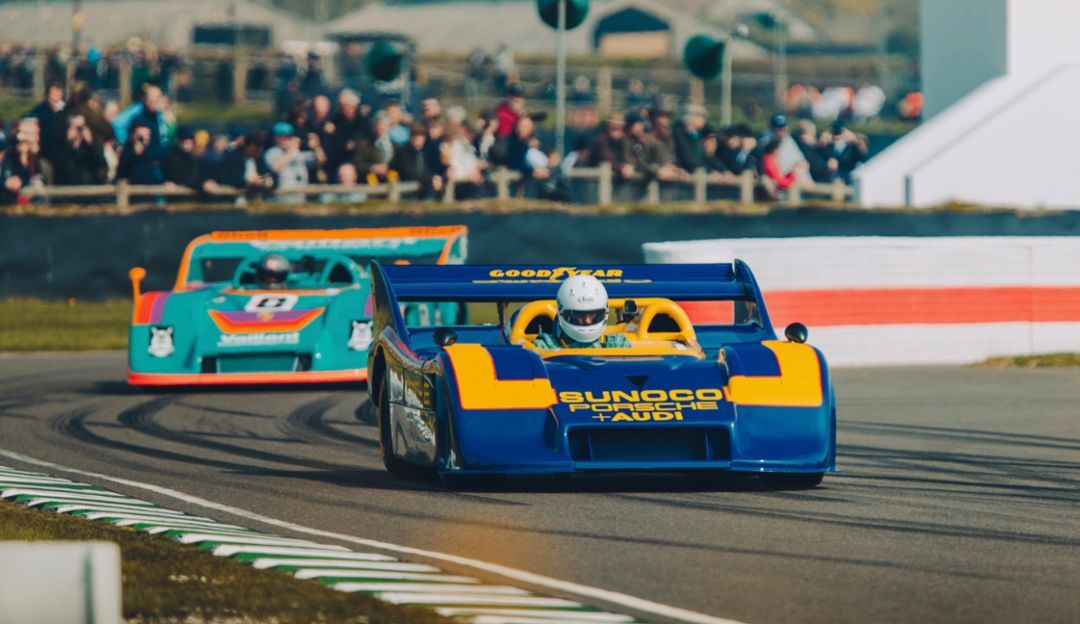

Driving the legendary Porsche 917. Source: Porsche
On the other side of the coin, the worst car you've ever driven?
The worst car I've ever driven? Well, I can't stand, and I hope nobody listening to this has one of these things, but I really can't abide the modern crossover SUVs because they're just not good at anything. They are really the lowest common denominator. If I had to name one, maybe a BMW X4. In terms of most disappointing car, probably a Ferrari 348, which when it came out in 1990 was just a horrible, tricky, malevolent thing. I actually drove another one a year or two back for a story, and it was just the same. It was still just everything I don't want a Ferrari to be to be honest.
Last question, which I've asked all our interviewees - money no object, three car garage?
Okay, so you've got to have a recreational car, a usable car and a racing car, I think. So the usable car would probably be a brand new G-Wagon. A diesel G-Wagon.
Diesel?
Yes, because I like range and I'm not interested in the performance if it's an everyday car. The road car would be a McLaren 720S, and the racing car is easy, a Lola T70 Mk3B.
Good choices. Thank you so much Andrew, that's absolutely fantastic. Some great stories and some great insights. I look forward to hopefully seeing you at an event soon. If any of our readers haven't been onto Drive Nation, you can follow them on Instagram, at @drivenation_.
@drivenation_, absolutely. Charles, thank you so much for this, it's been great, great fun. I hope I haven't bored all your listeners to death, and yes, hopefully I'll catch up with you at a racetrack somewhere soon.
Fantastic, thank you so much and speak to you soon.

